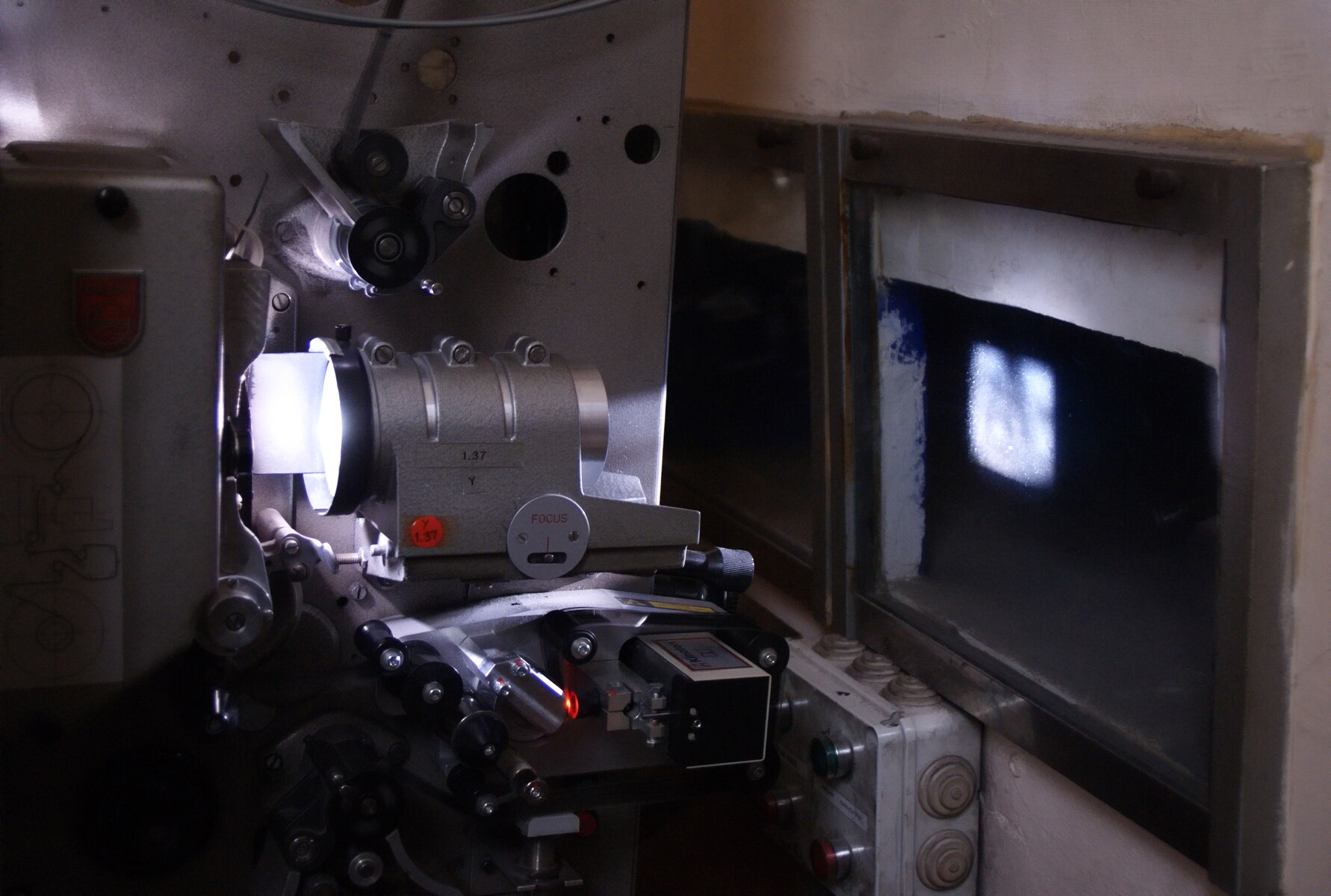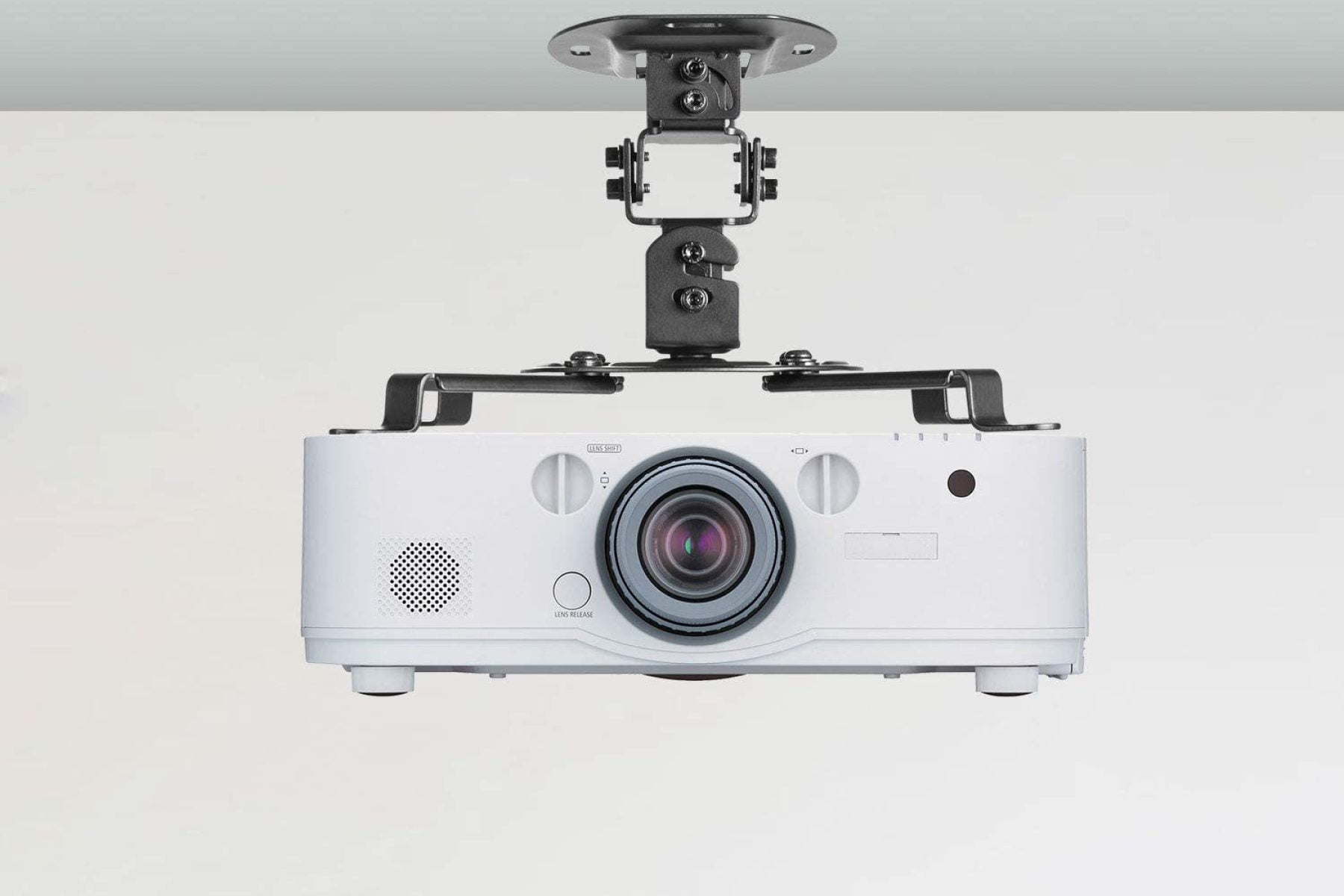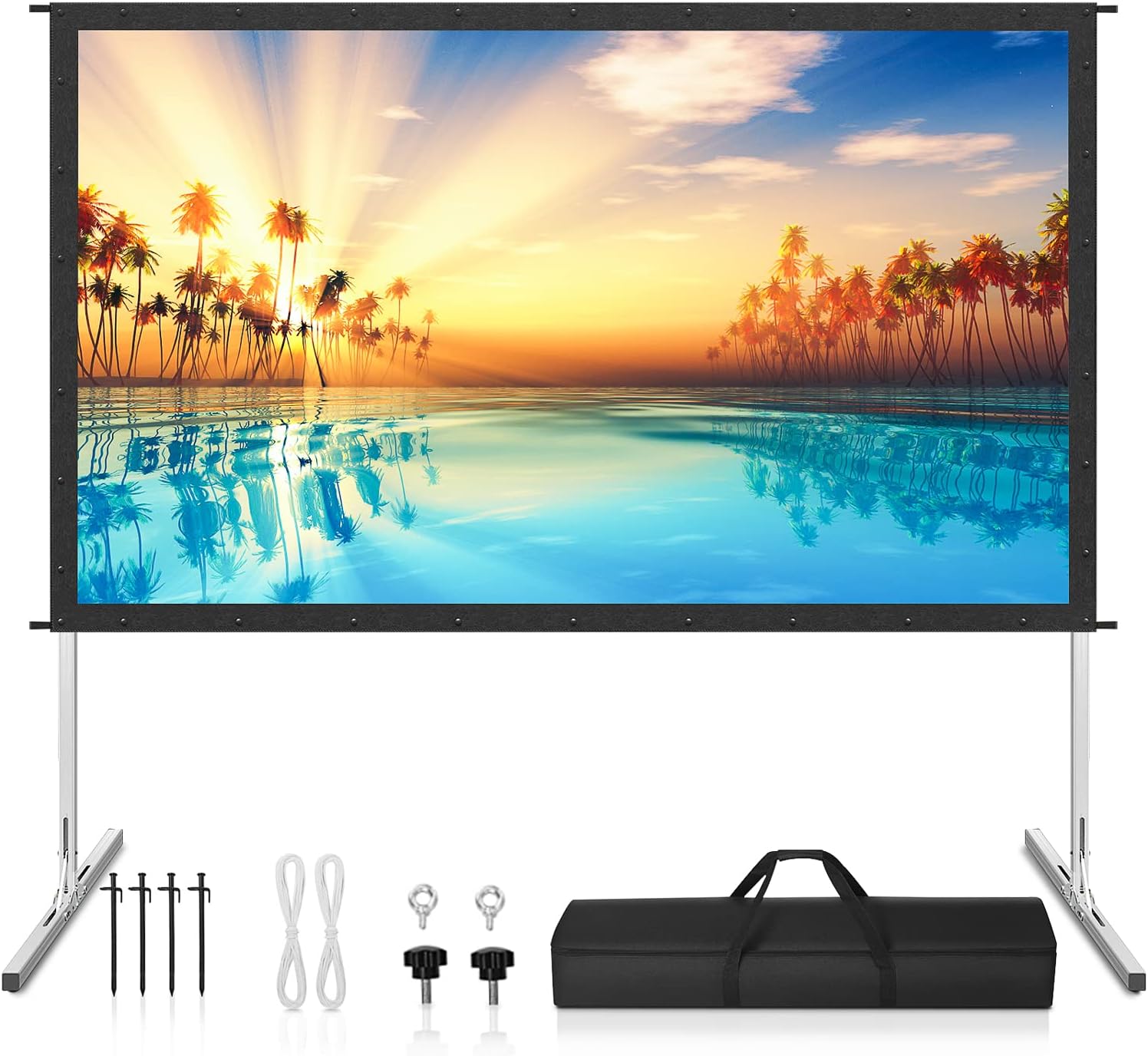Introduction
When we go to a movie theater, we are treated to an immersive audiovisual experience that transports us to another world. One of the key elements that contribute to this experience is the projector used in theaters. Projectors play a crucial role in displaying larger-than-life images on the big screen, bringing movies to life in all their glory.
In the past, theaters used film projectors, where reels of film were loaded and projected onto the screen. However, with the rapid advancements in technology, digital projectors have become the industry standard. Digital projectors offer superior image quality, sharpness, and clarity, enhancing the overall movie-watching experience.
In this article, we will explore the types of projectors commonly used in theaters and the components that make up a complete projector system. Understanding the technology behind these projectors will give us a better appreciation of the magic that happens behind the scenes at the theater.
So, let’s dive into the world of projectors and uncover the secrets of how theaters deliver stunning visuals that captivate our senses.
Digital Projectors vs Film Projectors
Traditionally, theaters used film projectors, where the movies were recorded on reels of film. These projectors worked by passing the film through a series of mechanisms that would display each frame on the screen at a rapid pace, creating the illusion of motion. Film projectors have a unique and nostalgic appeal, but they come with certain drawbacks.
One of the main disadvantages of film projectors is the degradation of film over time. As film reels are used repeatedly, they tend to wear out, resulting in scratches, dirt, and color fading. This can compromise the quality of the projected image, leading to a less immersive movie-watching experience.
Digital projectors, on the other hand, use cutting-edge technology to display movies. Instead of physical film reels, digital projectors rely on digital media sources, such as hard drives or servers, to retrieve and play the movie digitally. This eliminates the need for handling film reels and minimizes the risk of damage or degradation.
The benefits of digital projectors are numerous. Firstly, they offer exceptional image quality and clarity. Digital projectors can display images in high-definition resolutions, providing sharp and detailed visuals on the big screen. This allows viewers to see every minute detail and intricacy in the movie, enhancing the overall viewing experience.
Additionally, digital projectors offer more versatility in terms of content. With film projectors, theaters had to obtain physical copies of movies in the form of film reels. However, digital projectors enable theaters to receive movies digitally, allowing for quicker distribution and the ability to showcase a wide variety of films from different genres and languages.
While digital projectors have become the go-to choice for theaters, it’s worth noting that the transition from film projectors to digital projectors has been a significant undertaking for the industry. The cost of upgrading to digital projectors and the need for extensive training for theater operators have posed challenges. However, the benefits and advancements in digital projection technology have made it a worthwhile investment for theaters worldwide.
Types of Digital Projectors Used in Theaters
With the rise of digital projection technology, theaters have adopted various types of digital projectors to deliver the ultimate cinematic experience. These projectors utilize advanced technologies and features to showcase movies with stunning image quality and immersive visuals.
Here are some of the commonly used types of digital projectors in theaters:
- Digital Cinema Projectors: These projectors are specifically designed for movie theaters and meet the stringent requirements set by organizations such as the Digital Cinema Initiatives (DCI). Digital cinema projectors offer high brightness levels, exceptional contrast ratios, and precise color reproduction to faithfully reproduce the filmmaker’s vision on the big screen.
- Laser Projection Systems: Laser projectors use laser diodes as a light source to produce bright, sharp, and vibrant images. They provide superior image quality with excellent color accuracy, wider color gamut, and higher contrast levels compared to traditional lamp-based projectors. Laser projectors deliver consistent performance and are well-suited for large theaters and auditoriums.
- IMAX Projectors: IMAX projectors are known for their massive screens and unmatched immersive experience. These projectors use a proprietary projection system that incorporates specialized lenses and film formats to deliver breathtaking visuals on enormous screens. IMAX projectors offer exceptional image clarity, depth, and detail, taking movie-watching to a whole new level.
- Dolby Cinema Projectors: Dolby Cinema is a premium movie theater format that combines state-of-the-art projection technology with Dolby’s advanced audio systems. Dolby Cinema projectors employ high dynamic range (HDR) imaging, enhanced contrast ratios, and Dolby Vision technology to deliver lifelike colors, deeper blacks, and incredible on-screen detail. The combination of stunning visuals and immersive sound creates a captivating movie experience.
Each type of digital projector has its own unique features and advantages, catering to the different needs and preferences of theaters. The choice of projector depends on factors such as the size of the theater, budget constraints, and the desired level of image quality and immersion.
As technology continues to advance, we can expect to see further innovations in digital projection systems, pushing the boundaries of what is possible in terms of visual storytelling and movie-watching experiences.
Digital Cinema Projectors
Digital cinema projectors are specifically designed for movie theaters and are at the forefront of delivering high-quality visuals on the big screen. These projectors adhere to the stringent standards set by organizations like the Digital Cinema Initiatives (DCI), ensuring that movies are displayed with utmost precision and fidelity.
One of the key features of digital cinema projectors is their exceptional brightness levels. These projectors are equipped with powerful lamps that can produce high-intensity light, ensuring that the projected image is bright and vivid even in large theaters with ambient lighting. The high brightness level enhances the clarity and visibility of the movie, allowing viewers to immerse themselves in the on-screen action.
In addition to brightness, digital cinema projectors boast impressive contrast ratios. Contrast ratio refers to the difference between the brightest whites and the darkest blacks that a projector can display. High contrast ratios result in greater depth and detail in the image, making the visuals more lifelike and dynamic. This feature is crucial for accurately reproducing the intended cinematic experience envisioned by the filmmakers.
Color reproduction is another area where digital cinema projectors excel. These projectors utilize advanced color calibration and management technologies to ensure that the colors on the screen are accurate and vibrant. They can reproduce a wide color gamut, presenting a broader range of colors to create a visually striking and engaging movie-watching experience.
One aspect that sets digital cinema projectors apart is their ability to handle high-resolution content. They can display movies in resolutions such as 2K or 4K, which offer significantly more detail and sharpness compared to standard high-definition formats. This high level of resolution allows viewers to see every tiny detail and texture in the image, enhancing the overall visual experience.
Furthermore, digital cinema projectors incorporate advanced image processing technologies. These technologies help in reducing image artifacts, such as pixelation or motion blur, resulting in smoother and more seamless on-screen motion. The images appear crisp and clear, even during fast-paced action sequences.
Overall, digital cinema projectors are engineered to meet the demands of movie theaters in delivering top-notch visuals. Their high brightness, exceptional contrast, accurate color reproduction, and high-resolution capabilities work together to create a captivating cinematic experience that keeps audiences engaged and immersed in the magic of the movies.
Laser Projection Systems
Laser projection systems have revolutionized the way movies are displayed in theaters, offering outstanding image quality and superior visuals. These systems utilize laser diodes as the light source instead of traditional lamps, resulting in an array of benefits that enhance the overall cinematic experience.
One of the key advantages of laser projection systems is their brightness capability. Laser diodes are capable of producing intense and bright light, allowing for excellent visibility and clarity, even in large theaters or auditoriums. This ensures that movies are displayed with vibrant colors and sharp details, creating a visually stunning experience for moviegoers.
In addition to brightness, laser projection systems excel in their ability to achieve high levels of contrast. The use of lasers allows for precise control over the light output, enabling deep and rich blacks while maintaining the brightness of other parts of the image. This enhanced contrast brings a greater sense of depth and realism to the on-screen visuals, enhancing the immersive quality of the movie-watching experience.
Laser projection systems also deliver exceptional color accuracy. The laser light source offers a wider color gamut, enabling the projectors to reproduce a broader range of colors with greater precision and vibrancy. This results in more lifelike and vivid images, allowing viewers to experience movies in all their colorful glory.
Another advantage of laser projection systems is their long lifespan. Laser diodes have a remarkable longevity compared to traditional lamps, reducing the need for frequent replacements. This not only contributes to cost savings but also ensures consistent performance over an extended period, maintaining the image quality and reliability of the projector.
Furthermore, laser projection systems are known for their energy efficiency. Compared to traditional lamp-based projectors, they consume less power while delivering brighter and more vibrant images. This not only reduces operational costs for theaters but also contributes to a more sustainable and environmentally-friendly approach to movie projection.
Overall, laser projection systems have redefined the standards of image quality in theaters. With their high brightness capabilities, exceptional contrast levels, accurate color reproduction, and long lifespan, these systems offer a captivating visual experience that brings movies to life on the big screen like never before.
IMAX Projectors
IMAX projectors are renowned for their massive screens and unparalleled cinematic experience. They utilize a unique proprietary projection system that combines specialized lenses and film formats to deliver breathtaking visuals on enormous screens.
One of the distinguishing features of IMAX projectors is the size of the screen. IMAX theaters feature significantly larger screens compared to traditional movie theaters. These massive screens create an immersive and awe-inspiring experience, transporting viewers into the heart of the action.
IMAX projectors also employ specialized lenses that help optimize the projection for the large screen format. The lenses ensure that the projected image is sharp and uniform across the entire screen, maintaining the high level of detail even on such a vast canvas. This results in a truly immersive and larger-than-life experience for moviegoers.
In addition to the larger screens, IMAX projectors use a unique film format known as 70mm IMAX film. This film has larger frames, allowing for a higher resolution and greater clarity compared to traditional film formats. The use of 70mm IMAX film enhances the overall image quality, providing exceptional detail and sharpness that captivates the viewer.
Furthermore, IMAX projectors also incorporate advanced sound systems to complement the stunning visuals. IMAX theaters are equipped with powerful surround sound setups, delivering a truly immersive audio experience. The combination of crystal-clear visuals and booming surround sound creates an unparalleled level of immersion, making viewers feel like they are right in the middle of the movie.
IMAX projectors are not limited to a single format. IMAX has introduced newer digital projection systems, known as IMAX Digital, which use high-resolution digital projectors to deliver stunning visuals. These digital projectors offer incredible image quality, sharpness, and vibrant colors, providing an alternative to the traditional film-based IMAX experience.
Overall, IMAX projectors offer a unique cinematic experience that goes beyond the boundaries of traditional movie theaters. With their colossal screens, specialized lenses, and immersive sound systems, IMAX projectors transport viewers into a world where the boundaries of reality are pushed, allowing them to witness movies in a truly unforgettable way.
Dolby Cinema Projectors
Dolby Cinema projectors combine cutting-edge projection technology with advanced audio systems to deliver a premium movie-watching experience. These projectors, developed by Dolby Laboratories, are designed to provide stunning visuals and immersive sound that bring movies to life in a whole new way.
One of the standout features of Dolby Cinema projectors is the use of high dynamic range (HDR) imaging. HDR enhances the contrast ratio and color accuracy of the projected image, resulting in deeper blacks, brighter highlights, and a more vibrant color palette. This technology allows for a more immersive and visually striking experience, showcasing movies with exceptional clarity and detail.
Dolby Cinema projectors also support Dolby Vision, an advanced HDR format that offers even greater precision and control over the image quality. Dolby Vision ensures that every frame is displayed exactly as intended by the filmmakers, delivering a more faithful and immersive representation of their artistic vision.
In addition to the impressive visuals, Dolby Cinema projectors are equipped with state-of-the-art sound systems. The audio is delivered through a sophisticated array of speakers strategically placed around the theater to create a truly immersive sound experience. Dolby Atmos, Dolby’s advanced audio technology, allows for precise placement and movement of sound objects, enveloping the audience in a multidimensional soundscape that enhances the on-screen action.
Another noteworthy feature of Dolby Cinema projectors is their ability to support high frame rate (HFR) playback. HFR refers to the projection of movies at frame rates higher than the standard 24 frames per second. This results in smoother motion and reduces motion blur, creating a more realistic and lifelike viewing experience. The combination of HDR, Dolby Vision, and HFR projection brings movies to life with stunning visuals and fluid motion.
Dolby Cinema projectors also incorporate advanced image processing technologies to optimize the projected image. These technologies help to reduce image artifacts and improve overall image quality, ensuring a pristine and seamless visual experience for moviegoers.
Overall, Dolby Cinema projectors offer a premium movie-watching experience that combines exceptional visuals, immersive sound, and advanced technologies. With their support for HDR imaging, Dolby Vision, Dolby Atmos, and high frame rate playback, these projectors deliver a cinematic experience that truly captivates and engages the senses, allowing viewers to experience movies in a new dimension.
Components of Theater Projector Systems
A theater projector system consists of several key components that work together to deliver a seamless and immersive movie-watching experience. These components ensure that the movie is accurately displayed on the big screen while maintaining the highest standards of audiovisual quality. Let’s take a closer look at the essential components of a theater projector system:
- Projector: The projector itself is the heart of the system. It is responsible for receiving the movie content and projecting it onto the screen. The projector utilizes advanced technology, such as digital imaging chips or laser light sources, to display high-quality images with exceptional clarity and detail.
- Film or Digital Media Source: The film or digital media source contains the movie content that is played on the projector. In the case of traditional film projectors, the film reels are physically loaded into the projector. For digital projectors, the movie content is typically stored in a digital format, such as hard drives or servers, and is retrieved for playback.
- Servers: Servers are used to store and manage digital movie files in theaters. They provide a centralized location for storing and accessing the movie content, delivering it to the projector in a seamless manner. Servers also ensure smooth playback and synchronization of audio and video for an uninterrupted cinematic experience.
- Sound System: A theater projector system is incomplete without a robust sound system. High-quality speakers are strategically placed around the theater to deliver immersive and realistic sound. The sound system enhances the movie experience by providing clear dialogue, impactful sound effects, and a dynamic audio range that complements the visuals on the screen.
- Screen: The screen is where the projected image is displayed for the audience. It is made of a reflective surface that reflects the light from the projector back to the audience, forming the image. Screens can come in various sizes and materials, designed to optimize the reflection of light for optimal image quality and visibility.
These components work together seamlessly to create a captivating and immersive movie experience. From the projector that delivers stunning visuals, the media source that provides the movie content, and the servers that ensure smooth playback, to the sound system that enhances the audio experience and the screen that displays the image, each component plays a vital role in creating an unforgettable theater experience.
As technology continues to advance, we can expect further enhancements and innovations in theater projector systems, further elevating the quality and immersive nature of the cinematic experience.
Projector
The projector is the central component of a theater projector system, responsible for displaying the movie on the big screen. It utilizes advanced technology to take the movie content and project it with precision and clarity, allowing audiences to immerse themselves in the world of cinema.
Projectors have evolved significantly over the years, transitioning from film projectors to digital projectors that utilize advanced imaging technologies. The advancements in projector technology have resulted in superior image quality and enhanced visual experiences for moviegoers.
Modern projectors employ various technologies to deliver exceptional image quality. Digital projectors use imaging chips, such as Digital Micromirror Devices (DMD) or Liquid Crystal Displays (LCD), to display the movie content on the screen. These chips contain millions of tiny pixels that work together to create a detailed and vibrant image.
In addition to digital imaging chips, projectors also use advanced light sources to illuminate the image. Traditional lamp-based projectors use powerful lamps to emit bright light, ensuring the image is visible even in large theater spaces. However, newer projectors are integrating laser light sources that offer several advantages. Laser projectors provide increased brightness, enhanced color accuracy, and a longer lifespan compared to traditional lamp-based projectors.
Projectors also incorporate advanced image processing technologies to optimize the displayed image. These technologies handle tasks such as color calibration, pixel interpolation, and motion smoothing to deliver a seamless and visually appealing image. The image processing algorithms help reduce artifacts, improve color accuracy, and enhance contrast ratios, resulting in sharper and more vibrant visuals.
The resolution of the projector plays a significant role in determining the level of detail in the projected image. Projectors can support various resolutions, including standard high-definition (HD), 2K, and 4K. Higher resolution projectors offer more pixels and finer details, resulting in a crisper and more immersive visual experience.
Furthermore, projectors are designed to maximize brightness and ensure a consistent image quality throughout the life of the projector. Regular maintenance, such as lamp replacements or laser calibration, is performed to maintain optimal performance and ensure that the projected image remains vibrant and clear.
Overall, the projector is the essential component that brings movies to life on the big screen. Through advanced imaging technologies, light sources, image processing, and resolution capabilities, projectors deliver stunning visuals that captivate audiences and create memorable cinematic experiences.
Film or Digital Media Source
The film or digital media source is a crucial component of a theater projector system as it contains the movie content that is played on the projector. It serves as the medium through which filmmakers’ visions are brought to life on the big screen, delivering captivating stories and breathtaking visuals to the audience.
In the past, film projectors relied on physical film reels as the media source. Movies were recorded onto celluloid film, which was then loaded into the projector. As the film passed through the projector, each frame was illuminated, creating the illusion of motion. Film projectors have a distinct and nostalgic charm, embodying the traditional cinematic experience.
However, with the advent of digital technology, theaters have embraced digital media sources as the preferred method for delivering movies. Digital media sources, such as hard drives or servers, store the movie content in digital formats, allowing for efficient and seamless distribution to theaters worldwide.
Digital media sources offer several advantages over traditional film reels. Firstly, they enable theaters to access a vast library of movies easily. With digital distribution, theaters can receive movies digitally, eliminating the need for physical shipping or handling of film reels. This allows for faster distribution, more flexibility in programming, and the ability to showcase a diverse range of films from various genres and languages.
Moreover, digital media sources provide improved visual and audio quality. Digital movies can be recorded and mastered at higher resolutions, such as 2K or 4K, resulting in sharper details and more vibrant colors. Additionally, digital formats support advanced audio encoding technologies, ensuring that the theater’s sound system can deliver immersive and dynamic sound to complement the stunning visuals on the big screen.
Another advantage of digital media sources is their ease of use and reliability. Digital files are not subject to physical wear and tear like film reels, reducing the risk of damage or degradation. The content can be duplicated and stored in multiple locations, providing a backup in case of technical issues, and ensuring a consistent and uninterrupted movie-watching experience.
However, it is worth noting that some theaters still embrace the use of film projectors, maintaining the charm and nostalgia associated with the format. They may even specialize in screening classic movies that were originally shot on film, preserving the authenticity and unique aesthetic of those films.
Whether it is film or digital media sources, these components are vital in delivering captivating and immersive cinematic experiences. They serve as the vessel through which filmmakers’ creations are shared with audiences, enriching our lives with stories and transporting us to different worlds through the power of cinema.
Servers
Servers play a critical role in the operation of a theater projector system, serving as the backbone of digital content management and distribution. These powerful computing devices store and manage the vast array of digital movie files, ensuring seamless playback and efficient distribution to theaters.
The primary function of servers in a theater projector system is to store and retrieve digital movie files. The movies are stored in digital formats, such as Digital Cinema Packages (DCP), on the server’s storage devices. This central storage system allows theaters to access a wide catalog of movies easily, eliminating the need for physical film reels.
Server-based storage provides numerous benefits compared to traditional film-based distribution methods. The digital media files can be duplicated and distributed to multiple servers, enabling theaters to have backups and ensuring that the movie content is readily available for playback. This redundancy minimizes the risk of downtime and ensures that movies can be screened reliably, enhancing the overall movie-watching experience.
Furthermore, servers aid in managing and organizing the digital movie files. They allow theaters to program their screenings, schedule different films, and easily switch between movies. The server software provides a user-friendly interface for theater operators to navigate and select the desired content, streamlining the programming process and facilitating efficient theater management.
In addition to storing and managing the movie content, servers also play a crucial role in delivering the content to the projector for playback. They facilitate the transfer of digital movie files from the server’s storage to the projection system, ensuring a smooth and uninterrupted playback experience for audiences.
Server systems are equipped with powerful processing capabilities, allowing them to decode and decompress the movie files in real-time. This processing ensures that the movie content is delivered to the projector in the correct resolution and format for optimal projector performance and image quality.
Moreover, servers contribute to the security and anti-piracy measures in place for movie content. Digital cinema servers often incorporate encryption technologies, applying strict access controls to protect the integrity and confidentiality of the movie files. This helps prevent unauthorized distribution or reproduction of the content, safeguarding the intellectual property of filmmakers and studios.
In summary, servers are an integral part of a theater projector system, responsible for managing and distributing digital movie content. They provide secure and efficient storage, enable seamless playback, facilitate theater programming, and contribute to the overall reliability and effectiveness of the theater experience.
Sound System
A theater projector system is incomplete without a robust sound system, which serves as a vital component in delivering an immersive and captivating movie-watching experience. The sound system works in harmony with the visuals to create a multi-sensory experience that transports audiences into the world of the movie.
A high-quality sound system consists of several components strategically placed throughout the theater to create a surround sound experience. These components include speakers, amplifiers, audio processors, and subwoofers that work together to reproduce the movie’s audio with clarity, depth, and precision.
One of the key features of a sound system is its ability to reproduce crisp dialogue. Clear and intelligible dialogue is crucial for understanding the story and the characters’ interactions. Excellent speech reproduction ensures that every line of dialogue is delivered accurately to the audience, enhancing the overall comprehension and enjoyment of the movie.
The sound system also creates a dynamic range of audio, from subtle whispers to thunderous explosions. It captures the intricacies of sound effects, music, and ambient sounds, allowing viewers to feel fully immersed in the movie’s world. The precise positioning of speakers throughout the theater creates a sense of direction and movement, ensuring that sound effects move seamlessly around the audience.
One notable sound technology commonly used in theaters is Dolby Atmos. Dolby Atmos enables sound engineers to place sounds in a three-dimensional space, creating a more realistic and enveloping audio experience. With overhead speakers and advanced object-based audio techniques, Dolby Atmos offers a truly immersive sound experience, enhancing the overall movie-watching experience.
The sound system is calibrated to match the visual experience, ensuring that the audio complements the on-screen action seamlessly. Sound engineers often work closely with filmmakers to fine-tune the mix, ensuring that the audio elements align with the director’s vision and the immersive nature of the movie.
Moreover, the sound system is designed to meet the acoustic requirements of the theater space. The room’s dimensions, materials, and layout are carefully considered to optimize sound reflection and absorption. Acoustic treatments, such as wall panels and curtains, help create an optimal listening environment, reducing echoes and enhancing the clarity and precision of the audio.
Overall, a well-designed sound system enhances the movie-watching experience by fully immersing viewers in the audio world of the film. It enables audiences to feel the impact of explosions, the subtlety of whispered conversations, and the power of the movie’s score, creating a truly captivating and memorable cinematic experience.
Screen
The screen is a fundamental component of a theater projector system, serving as the canvas on which the projected image is displayed for the audience. It plays a crucial role in ensuring the optimal viewing experience, allowing viewers to see movies in all their visual glory and detail.
Screens are specifically designed to reflect the projected light back to the audience, ensuring that the image is visible from all seating positions in the theater. They are typically made of specialized materials that enhance the reflection of light while minimizing distortions or artifacts that could degrade the image quality.
The size of the screen is a key consideration in a theater projector system. Larger screens create a more immersive experience, allowing viewers to be fully absorbed in the movie. The size is chosen based on the dimensions and seating capacity of the theater, ensuring that the screen is proportionate to the viewing area for optimal visibility and audience engagement.
Screen materials are carefully selected to optimize image quality. The materials used are typically highly reflective, allowing for excellent brightness and contrast. They are designed to evenly distribute the projected light across the screen, ensuring uniform brightness and clarity from edge to edge.
Additionally, screens are engineered to enhance color reproduction, delivering accurate and vibrant colors that faithfully represent the filmmaker’s vision. Color balance and consistency are crucial to create an immersive visual experience and maintain the integrity of the movie’s visuals.
Screen gain is another factor to consider. Gain refers to the ratio of light reflected off the screen compared to the amount of light projected onto it. Screens with higher gain effectively reflect more light, resulting in increased brightness. However, a higher gain screen may sacrifice the viewing angle and may result in artifacts such as hotspots or a narrow viewing sweet spot.
The aspect ratio of the screen is also essential in preserving the director’s intended presentation. The aspect ratio determines the width and height proportions of the screen, making sure that the movie is displayed in its original format without cropping or stretching the image. This ensures that audiences see the movie as the director intended, maintaining the artistic integrity and cinematic experience.
Furthermore, screens can incorporate advanced features such as 3D capabilities, enabling the projection of stereoscopic movies for a more immersive viewing experience. These screens have specially designed coatings that enable the polarization or filtering of light for 3D projection systems while maintaining excellent image quality.
In summary, the screen is a critical component of the theater projector system, serving as the canvas that showcases the projected image. Through careful selection of materials, size, aspect ratio, and gain, screens ensure that movies are displayed with optimal image quality, color accuracy, and immersive visuals, truly bringing the magic of cinema to life on the big screen.
How Theaters Choose the Right Projector
When it comes to choosing the right projector, theaters consider various factors to ensure they can deliver the best possible visual experience to their audiences. Selecting the appropriate projector involves careful evaluation of specific needs, technical requirements, budget considerations, and audience expectations.
One of the primary considerations is brightness. The projector’s brightness level needs to be suitable for the theater’s screen size and ambient lighting conditions. Large theaters or those with high levels of ambient light typically require projectors with higher brightness capabilities to maintain image clarity and visibility.
Resolution is another crucial aspect. The projector’s resolution determines the level of detail and sharpness in the displayed image. The industry standard is shifting towards higher resolutions, such as 2K or 4K, to meet audience expectations for ultra-high-definition visuals. The choice of resolution depends on factors like screen size, viewing distance, and budget constraints.
Color accuracy and reproduction are essential considerations for theaters. Projectors capable of producing a wide color gamut ensure vivid and realistic colors, accurately representing the filmmaker’s vision. This is especially important for movies with stunning visual effects, vibrant cinematography, or intricate color grading.
Contrast ratio is another critical factor in projector selection. A high contrast ratio contributes to the richness and depth of the image, enhancing the viewing experience. The ability to accurately display both the darkest blacks and the brightest whites ensures that the projected image has excellent dynamic range and detail.
Projector longevity and reliability are also important considerations. Theaters need projectors that can withstand the demands of continuous operation over extended periods. Factors like lamp life, cooling systems, maintenance requirements, and availability of technical support are key elements in selecting a reliable and durable projector.
Budget considerations play a significant role in projector selection. Theaters must find a balance between the desired technical specifications and the available budget. The cost of the projector itself, as well as ongoing maintenance and operational expenses, need to be taken into account.
Compatibility with other theater equipment is another factor to consider. Projectors need to integrate seamlessly with other components of the theater projector system, such as servers, sound systems, and control systems. Compatibility ensures smooth operation and efficient management of the overall theater experience.
Finally, theaters may also assess the reputation and credibility of projector manufacturers and suppliers. They may consider factors such as the company’s track record, customer support, warranty terms, and upgrade options.
Ultimately, choosing the right projector is a highly individualized process for theaters. It requires assessing the specific needs of the theater, understanding technical specifications, considering budget limitations, and selecting a projector that offers the best balance of performance, reliability, and visual quality to deliver a captivating movie experience for their audiences.
Conclusion
Theater projectors play a crucial role in delivering captivating cinematic experiences to audiences around the world. The transition from film projectors to digital projectors has revolutionized the industry, offering superior image quality, versatility in content, and enhanced visual effects. Digital projectors, such as digital cinema projectors, laser projection systems, IMAX projectors, and Dolby Cinema projectors, utilize advanced technologies to create immersive visuals that transport viewers into the world of movies.
Each component of a theater projector system, from the projector itself to the film or digital media source, servers, sound system, and screen, works together harmoniously to deliver the ultimate movie-watching experience. These components are carefully designed and selected to ensure optimal image quality, seamless operation, and an immersive audiovisual environment.
The choice of the right projector involves considering factors such as brightness, resolution, color accuracy, contrast ratio, reliability, compatibility, and budget. Theaters carefully evaluate their specific needs and audience expectations to select a projector that best fulfills these requirements, allowing them to deliver stunning visuals that captivate and engage their patrons.
As technology continues to advance, we can anticipate further innovations in theater projectors, pushing the boundaries of visual quality and enhancing the cinema experience even further. Whether it is the cinematic magic of film projectors or the cutting-edge technology of digital projectors, theater projectors will continue to bring stories to life, transporting us into new worlds and creating unforgettable moments on the big screen.

























